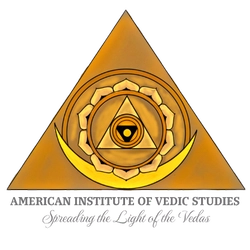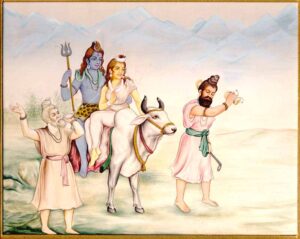Dual doshic types can complicate Ayurvedic treatment. We provide a few simple rules for dealing with these that can make treatment more effective.
Ayurveda has a brilliant yet simple division of human beings into three primary constitutional types of Vata, Pitta and Kapha that reflect our mind-body type and functions.
Vata types are dominated by the air element primarily, are thin or light in build, nervous, sensitive, quick in movement, and changeable, tending to suffer from cold, dryness and wind.
Pitta types are dominated by the fire element primarily, have a medium build, good muscles, are assertive, aggressive, determined and suffer from heat and inflammation.
Kapha types are dominated by the water element primarily, have a heavy build, carry excess weight and water, are emotional, steady, conservative, possessive and suffer from dampness and cold.
Ayurvedic dosha questionnaires aid in this ascertainment. However, some people who study their Ayurvedic constitution may discover that they are dual doshic types. They contain two of the three doshas in relatively equal proportions, so that they cannot simply reduce themselves to one standard doshic type of Vata, Pitta or Kapha, or follow a health regimen aimed at controlling one dosha only.
They can be Vata-Kapha, Vata-Pitta or Pitta-Kapha in relatively equal proportions.
Yet if we examine the existing literature on Ayurveda we find treatment is mainly described in terms of one dosha only, not two. Are dual dosha types intentionally left out? The same is true relative to Ayurvedic recommendations for Yoga asanas and Yoga practices. These are usually described in terms of one dosha only.
Actually the situation is much simpler than it appears to be. The basic rule of Ayurvedic treatment is to treat one dosha at a time. Diseases and imbalances generally reflect the one dosha that is in excess (except in severe or long term diseases, which can be complicated by more than one dosha).
So if you are a dual doshic type, it is usually best to treat the single dosha that is most disturbing you currently or most in danger of becoming excess by the season or your lifestyle.
Rules of Treating Dual Doshic Types
There are a few rules to follow, which I have outlined below, that can make this easy to do, so that dual doshic types know how to treat themselves.
The first rule of treating dual doshic types is to treat the single dosha that is currently most out of balance in your life. This requires some ability to understand disease potentials and diagnosis.
Note the symptoms or conditions that are most bothering you and see what dosha these fall under. Usually Vata is the first dosha to go out of balance, while Kapha is the slowest to go out of balance, with Pitta in between. You can examine books that speak of the Ayurvedic treatment of common diseases that will highlight such doshic factors behind the condition, like my book Ayurvedic Healing: A Comprehensive Guide.
Second, if there is no single dosha currently out of balance for you, best is to follow Ayurvedic time cycles mainly through seasons of the year (though this will have climate variations depending upon where you live). These seasonal charges are actually the most practical way of treating dual doshic types.
Vata-Kapha types should follow an anti-Kapha diet and lifestyle from the winter solstice to the summer solstice (Dec. 21 – June 21), and an anti Vata approach from the summer solstice to the winter solstice (June 21 – Dec. 21).
Vata-Pitta types should follow an anti Pitta approach from the vernal equinox to the autumn equinox (March 21 – Sept. 21), and an anti Vata approach from the autumn equinox to the vernal equinox (Sept. 21 to March 21).
Pitta-Kapha types should follow an anti Pitta approach from around May 1 to Nov. 1 and and an anti-Kapha approach from the around Nov. 1 to May 1.
The same rules can be used for Yoga asana practice, emphasizing reducing any seasonal doshic excess that are likely to occur.
What I have given above is mainly for four season climates. You can also note the condition of your climate overall. In cold, dry and windy regions, Vata will be usually most disturbed. In hot regions, Pitta will be usually most disturbed. In wet or damp climates or locations, Kapha will likely be most disturbed.
A third strategy is to try to decrease the primary quality that the two dual doshic types share.
Vata and Kapha share the main quality of cold——make sure to eat warm food and stay warm on all levels to counter this. Dietarily this is much like following the opposite of the usual anti-Pitta diet, taking mainly sour, salty and pungent foods. Psychologically this is to stay in supportive relationships, cultivating feels of warmth and wellbeing.
Vata and Pitta share the main quality of lightness.—–make sure to be grounded and steady to counter this. Dietarily this is to follow the opposite of the usual anti-Kapha diet, taking sweet, sour and salty foods.
Psychologically this is to stay close to nature and the Earth and to have proper rest and relaxation.
Pitta and Kapha share the main quality of dampness or oiliness.—–make sure to stay dry to counter this. Dietarily this is to follow a diet opposite the Vata-reducing diet, which is taking pungent, bitter and astringent foods.
Psychologically this is to stay detached, uninvolved and non-possessive.
A fourth consideration is in terms of the state of your Agni or digestive fire. You must first strengthen your Agni. If you have a weak or disturbed Agni you will have a notable tongue coating and digestive problems. To strengthen the Agni many herbs and spices can be helpful.
Vata-Kapha: most spices are good including hot spices like chilis, black pepper, ginger, mustard, cardamom, cinnamon, as you wish.
Vata-Pitta: only mild spices can be used like coriander, cloves, cardamom, turmeric, nothing too hot.
Pitta-Kapha: aromatic spices are good but not hot spices, such as ginger, cinnamon, cloves, cardamom, turmeric.
These are but a few suggestions, with the seasonal adjustments being most important. But dual doshic types can easily balance the two differing forces involved in their nature on both physical and mental levels.
Dr. David Frawley







